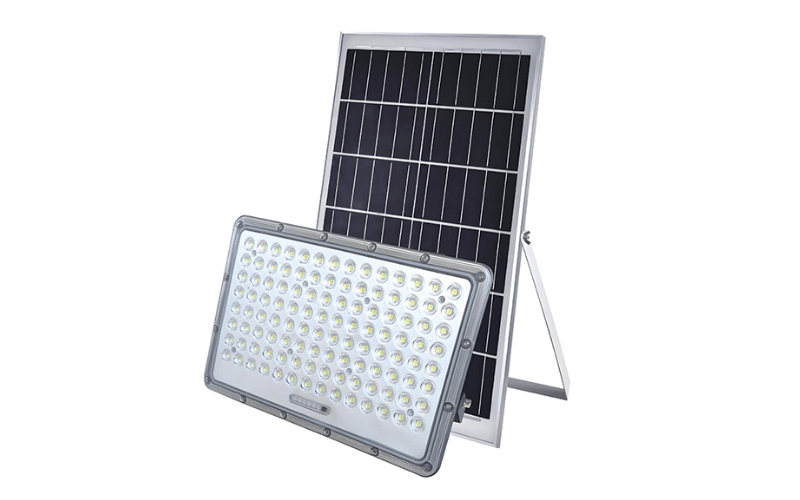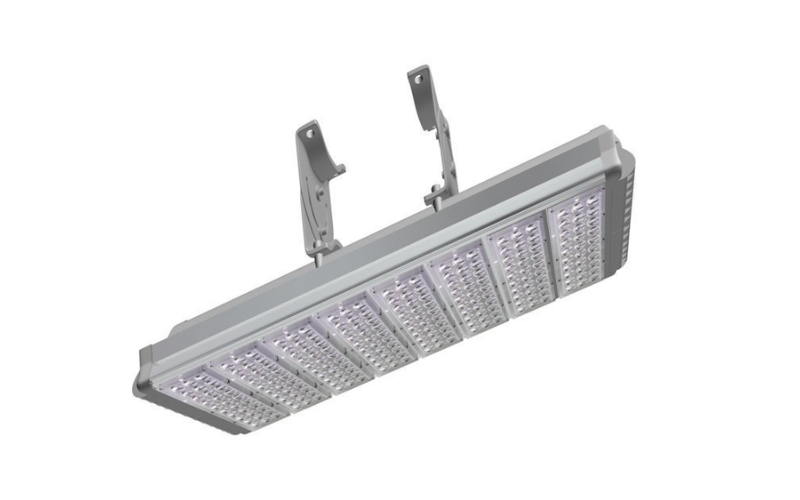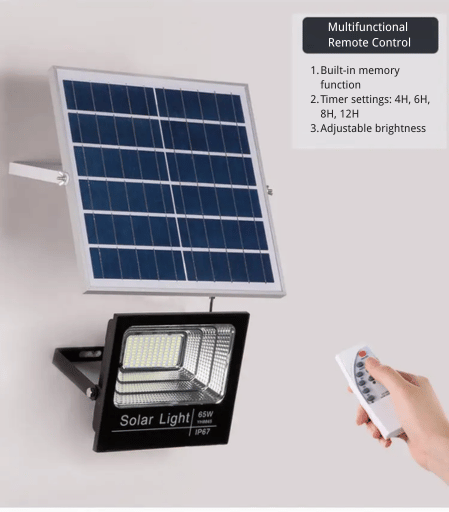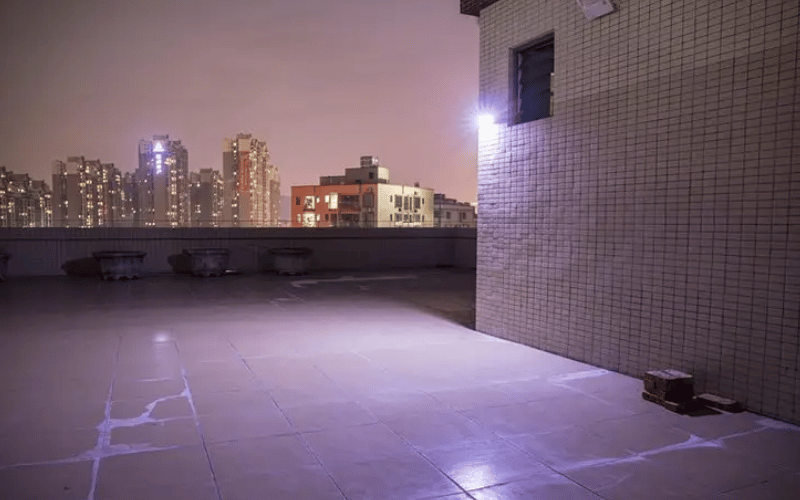Solar flood lights are revolutionizing outdoor lighting by combining energy efficiency, eco-friendliness, and functionality. Whether you’re looking to enhance home security, illuminate your garden, or brighten pathways, these lights offer a versatile solution powered entirely by the sun. In this guide, you’ll learn how solar flood lights work, the key features to consider, real-world applications, and expert tips to help you make an informed choice. From understanding lumens to selecting the right mounting options, this comprehensive resource ensures you find the perfect lighting for your needs.
Table of Contents
ToggleUnderstanding Solar Flood Light Technology
Solar flood lights are an innovative solution for outdoor lighting, combining energy efficiency with eco-friendliness. These lights harness the sun’s energy during the day and convert it into electricity, which is stored in a battery. At night, they automatically illuminate your outdoor spaces, providing reliable lighting without increasing your energy bill. Here’s a detailed breakdown of how they work and what makes them effective.
How Solar Panels Work
- Photovoltaic cells capture sunlight:
Solar panels are equipped with photovoltaic (PV) cells made from semiconductor materials like silicon. When sunlight hits these cells, it excites the electrons, generating an electric current. This process, known as the photovoltaic effect, is the foundation of solar energy conversion. - This energy is converted into electricity:
The electric current generated by the PV cells is direct current (DC) electricity. This DC power is used to charge the battery and, ultimately, power the LED lights. Some systems may include an inverter to convert DC to alternating current (AC) for specific applications. - A battery stores the power for later use:
The electricity generated during the day is stored in a rechargeable battery, typically lithium-ion or nickel-metal hydride. This stored energy ensures the lights can operate consistently at night, even after cloudy days.
Battery Life and Charging
- Battery capacity determines how long lights stay on:
The size and quality of the battery directly impact the duration of illumination. Larger batteries can store more energy, allowing the lights to stay on for longer periods, often up to 8-12 hours on a full charge. - Look for lights with good charging efficiency:
High-quality solar flood lights are designed to charge efficiently, even in less-than-ideal conditions like overcast weather. Advanced models use monocrystalline solar panels, which are more efficient at capturing sunlight compared to polycrystalline panels. - Direct sunlight is crucial for full charging:
To maximize charging efficiency, position the solar panel in an area that receives at least 6-8 hours of direct sunlight daily. Avoid placing the panel under trees, eaves, or other obstructions that cast shadows, as this can significantly reduce charging performance and runtime.
LED Brightness (Lumens)
- Lumens measure light output. More lumens mean brighter light:
The brightness of a solar flood light is measured in lumens, which indicate the total amount of visible light emitted. Higher lumens result in brighter illumination, making them suitable for larger or more demanding areas. - Flood lights typically range from 500 to 5000 lumens:
Solar flood lights come in a variety of brightness levels to suit different needs. For example, 500-1000 lumens are ideal for small pathways or patios, while 3000-5000 lumens are better suited for large backyards, driveways, or parking lots. - Choose lumens based on the area you need to cover:
Assess the size and purpose of the area you want to illuminate. For a small patio, a 1000-lumen light provides sufficient brightness, while a 5000-lumen light is perfect for a large garden or commercial space. Adjustable heads can further help direct the light where it’s needed most.
By understanding the role of solar panels, batteries, and lumens, you can make an informed decision when selecting solar flood lights. These lights not only provide efficient and reliable illumination but also contribute to a greener, more sustainable future.
Key Features to Look For
Not all solar flood lights are created equal. Understanding the key features can help you choose lights that offer superior performance, durability, and functionality for your outdoor lighting needs.
Durability and Weather Resistance
- Look for IP ratings (e.g., IP65 or higher):
The IP (Ingress Protection) rating indicates how well the light is protected against dust and water. An IP65 rating means the light is dust-tight and can withstand water jets, making it ideal for outdoor use in rain or snow. For areas with harsher conditions, consider IP66 or IP67-rated lights for added protection. - This means they can withstand rain, dust, and extreme temperatures:
Solar flood lights with high IP ratings are built to endure various weather conditions, from heavy rain to scorching heat or freezing cold. This ensures consistent performance throughout the year, even in unpredictable climates. - Materials like ABS plastic and aluminum are good choices:
ABS plastic is lightweight, impact-resistant, and UV-stable, making it a durable option for outdoor lights. Aluminum, on the other hand, is rust-resistant and provides a sturdy frame, ensuring the light can handle wear and tear over time.
Motion Detection and Smart Controls
- Motion sensors turn lights on when movement is detected:
Motion-activated lights are equipped with sensors that detect movement within a specific range, typically 10-30 feet. This feature conserves battery life by only activating the light when needed, making it ideal for security purposes. - This saves energy and deters intruders:
By illuminating dark areas when motion is detected, these lights not only save energy but also discourage potential intruders. For added security, look for lights with adjustable sensitivity settings to customize the detection range. - Some lights have remote controls or app integration:
Advanced models come with remote controls or smartphone apps, allowing you to adjust brightness, set timers, or switch modes without physically accessing the light. This feature is especially useful for hard-to-reach installations.
Adjustable Heads and Mounting Options
- Flexible heads let you aim light where you need it most:
Lights with adjustable heads allow you to direct the beam precisely, ensuring optimal illumination for specific areas like driveways, patios, or gardens. Some models even offer multiple adjustable heads for broader coverage. - Consider pole mounts, wall mounts, or ground stakes:
Different mounting options provide flexibility for various setups. Wall mounts are great for garages or entryways, pole mounts work well for elevated lighting, and ground stakes are perfect for garden paths or landscaping. - Ensure installation is simple and secure:
Choose lights with clear instructions and all necessary hardware included, such as screws, brackets, or anchors. This ensures a straightforward installation process and a secure fit, even in windy conditions.
By paying attention to these detailed features, you can confidently select solar flood lights that offer durability, energy efficiency, and versatility for your outdoor lighting needs.
Top Solar Flood Light Applications
Where will you use your new lights? Solar flood lights are incredibly versatile, offering solutions for safety, security, and aesthetics in various outdoor spaces. Explore these common applications to maximize their potential and meet your specific needs.
Home Security Lighting
- Deter burglars and protect your property:
Bright solar flood lights eliminate dark corners around your home, making it less appealing to intruders. Place them near entry points like doors, windows, and garages to enhance security. - Light up driveways, entryways, and backyards:
Install lights along your driveway to improve visibility for vehicles and pedestrians. Use them in backyards to illuminate large areas, ensuring safety during nighttime activities. - Motion-activated lights are ideal here:
Motion sensors detect movement within a set range, instantly turning on the light. This feature not only conserves energy but also alerts you to unexpected activity, adding an extra layer of security.
Garden and Landscape Illumination
- Highlight trees, paths, and garden features:
Use solar flood lights to accentuate focal points like tall trees, flower beds, or water fountains. This creates a visually appealing landscape that stands out even after sunset. - Create a beautiful ambiance after dark:
Opt for lights with adjustable brightness to set the mood for evening gatherings. Softer lighting can create a cozy atmosphere, while brighter settings enhance visibility for outdoor events. - Adjustable heads help direct light precisely:
Lights with adjustable heads allow you to focus the beam on specific areas, ensuring the right balance of light and shadow. This feature is handy for highlighting intricate garden details.
Pathway and Entryway Lighting
- Make walking paths safer and more visible:
Illuminate pathways to prevent accidents, especially in areas with uneven surfaces or steps. Bright, focused lighting ensures safe navigation for you and your guests. - Welcome guests with well-lit entrances:
A well-lit entryway not only enhances safety but also creates a warm and inviting atmosphere—place lights near doorways, porches, or gates to guide visitors to your home. - Consider solar path lights as a complement:
Combine solar flood lights with smaller path lights for a layered lighting effect. This approach provides both broad illumination and detailed lighting for walkways, enhancing both functionality and aesthetics.
By tailoring your solar flood light setup to these applications, you can improve the safety, security, and beauty of your outdoor spaces while enjoying energy-efficient lighting.
Real-World Examples and Expert Advice
Discover how others are using solar flood lights to enhance their outdoor spaces and gain actionable insights from industry professionals to maximize the performance and longevity of your setup.
Case Study: The Johnson Family’s Backyard
- The Johnsons installed motion-sensor flood lights:
To improve security and visibility, the Johnson family placed motion-activated solar flood lights around their backyard. They installed lights near the patio, along the fence, and by the garden shed to cover all critical areas. - They noticed fewer animals in their garden:
The bright, motion-activated lights deterred nocturnal animals like raccoons and deer, which had previously damaged their plants and garden beds. This allowed their garden to thrive without the need for additional barriers. - Their kids felt safer playing outside after sunset:
With the backyard well-lit, their children could safely play in the evenings without worrying about tripping over toys or encountering dark, shadowy areas. The lights also made it easier for the family to host outdoor gatherings after dark.
Expert Quote: Solar Lighting Specialist
- “Good solar flood lights pay for themselves quickly. They reduce energy costs and add security. Proper placement is key for maximum charge and coverage.”
- Alex Chen, Solar Solutions Expert
Alex emphasizes the importance of positioning solar panels in areas with consistent sunlight and choosing lights with features like motion detection and adjustable heads to maximize their utility.
- Alex Chen, Solar Solutions Expert
Tips for Maximizing Performance
- Clean solar panels regularly:
Dust, dirt, and debris can accumulate on the solar panels, blocking sunlight and reducing efficiency. Clean the panels with a damp cloth or soft brush at least once a month to maintain optimal performance. - Install lights where they get at least 6-8 hours of direct sun daily:
Position the solar panels in open areas that receive consistent sunlight throughout the day. Avoid placing them near tall buildings, fences, or other structures that may cast shadows. - Avoid placing them under trees or eaves that cast shadows:
Shaded areas can significantly reduce the panel’s ability to generate power, leading to shorter runtimes and dimmer lights at night. If unavoidable, consider trimming branches or relocating the lights to a sunnier spot.
By learning from real-world examples like the Johnson family and following expert advice, you can ensure your solar flood lights deliver reliable performance and enhance the safety and beauty of your outdoor spaces.
Making Your Final Choice
Selecting the right solar flood lights requires careful consideration of your specific needs and the features available. By evaluating factors like budget, durability, and support, you can make an informed decision that balances performance, longevity, and value.
Budget Considerations
- Prices vary widely. Set a budget before you shop:
Solar flood lights range from basic models priced around $20 to premium options costing $100 or more. Establishing a budget helps you focus on lights that meet your needs without overspending. For example, a smaller budget may suit pathway lighting, while a larger budget is ideal for high-performance security lights. - More expensive models often offer better durability and brightness:
Premium lights typically feature higher lumen output, advanced motion sensors, and robust weatherproofing. For instance, a $30 light may provide 500 lumens and basic weather resistance, while a $100 model could offer 3000 lumens, IP67 waterproofing, and app-controlled settings. - Long-term savings on electricity are significant:
Although the initial cost of solar flood lights may be higher than traditional lights, they eliminate electricity costs entirely. Over time, this can result in substantial savings, especially for homes with multiple outdoor lights.
Warranty and Customer Support
- A good warranty offers peace of mind:
Look for products with warranties of at least 1-2 years. Some high-end models even offer 5-year warranties, covering defects and performance issues. A strong warranty ensures you’re protected against unexpected failures. - Look for brands with reliable customer service:
Choose manufacturers known for responsive and helpful support. Brands with dedicated customer service teams can assist with troubleshooting, replacements, or installation questions, ensuring a smoother experience. - Check reviews for feedback on product longevity and support:
Online reviews often provide valuable insights into real-world performance. Look for feedback on how well the lights hold up over time and whether the brand honors its warranty and provides effective support.
By carefully considering your budget, warranty options, and the reputation of the brand, you can confidently invest in solar flood lights that deliver reliable performance and long-term value for your outdoor lighting needs.
Frequently Asked Questions
Q: How do solar flood lights work?
A: Solar flood lights use photovoltaic (PV) cells to capture sunlight and convert it into electricity. During the day, the PV cells generate direct current (DC) electricity, which is stored in a rechargeable battery. At night, the stored energy powers the LED lights, providing bright and efficient illumination without relying on electricity from the grid.
Q: What are the benefits of using solar flood lights?
A: Solar flood lights offer several benefits, including energy efficiency, cost savings, and eco-friendliness. They reduce electricity bills by using solar power, require minimal maintenance, and are easy to install without wiring. Additionally, they enhance outdoor safety and security while being environmentally sustainable.
Q: How long do solar flood lights last?
A: The lifespan of solar flood lights depends on the quality of the components. High-quality LED lights can last up to 50,000 hours, while the rechargeable battery typically lasts 2-5 years with proper care. Cleaning the solar panels regularly and ensuring they receive direct sunlight can extend their performance.
Q: Can solar flood lights work in cloudy weather?
A: Yes, solar flood lights can work in cloudy weather, but their performance may decrease. High-quality models with efficient solar panels can still charge in low-light conditions, though the battery may not reach full capacity. Positioning the panels in the sunniest location helps maximize charging efficiency.
Q: What is the ideal brightness for solar flood lights?
A: The ideal brightness depends on the area you want to illuminate. For small spaces like patios or pathways, 500-1000 lumens work well. For larger areas like driveways or backyards, choose lights with 3000-5000 lumens to ensure adequate coverage and visibility.
Q: How do I maintain solar flood lights?
A: Maintain solar flood lights by cleaning the solar panels monthly to remove dust and debris that block sunlight. Check the battery periodically and replace it when its performance declines. Ensure the lights are positioned in direct sunlight and adjust their placement if shadows or obstructions develop.
Q: Are solar flood lights weatherproof?
A: Most solar flood lights are weatherproof and designed to withstand outdoor conditions. Look for models with an IP65 rating or higher to ensure protection against rain, dust, and extreme temperatures. Durable materials like ABS plastic or aluminum also enhance weather resistance.
Q: Can I install solar flood lights myself?
A: Yes, you can easily install solar flood lights without professional help. Most models come with mounting hardware and clear instructions. Choose a location with direct sunlight, secure the light using the provided hardware, and adjust the angle of the solar panel and light head for optimal performance.
Q: Do solar flood lights have motion sensors?
A: Many solar flood lights include motion sensors that activate the light when movement is detected. This feature conserves battery life and enhances security by illuminating dark areas only when needed. Some models also allow you to adjust the sensitivity and detection range.
Q: How do I choose the best solar flood lights for my needs?
A: To choose the best solar flood lights, consider factors like brightness (lumens), battery capacity, weather resistance (IP rating), and additional features like motion sensors or app controls. Assess your specific needs, such as security, garden lighting, or pathway illumination, and select a model that matches your requirements and budget.
Concluding Summary
Solar flood lights are a smart investment for anyone seeking reliable, energy-efficient outdoor lighting. By understanding their technology, exploring key features like motion detection and weather resistance, and tailoring them to specific applications, you can enhance the safety, beauty, and functionality of your space. With expert advice and practical tips, you’ll be equipped to choose lights that deliver long-term value and performance.





